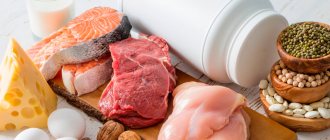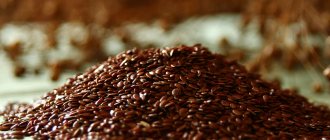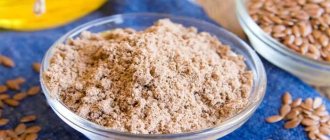Although people have known about the beneficial properties and high fiber content of bran for a very long time, it was only at the end of the twentieth century that this product began to be sold in stores and supermarkets. Previously, wheat bran was treated only as a by-product that remained after wheat processing. Now many people who lead a healthy lifestyle and watch their diet are happy to include wheat bran in their diet. Experts fully support them and claim that this product normalizes the functioning of the gastrointestinal tract and helps to lose a few extra pounds.
What beneficial properties does wheat bran have? Can all people, without exception, eat them? What components are included in this product? How to take it correctly so as not to harm your body? Today we will try to answer important questions regarding wheat bran.
Composition and benefits of bran
During processing, wheat grains are divided into different types of flour, germ and bran. The latter refers to the outer shell of wheat. It is this shell that is removed during the flour making process so that it is pure white.
Wheat bran is a light, small husk with a herbaceous flavor and a subtle aroma. They are distinguished from other types of bran by their delicate texture. People who are losing weight often try to start introducing fiber into their diet with them, gradually adding oat or rye bran.
As for the nutritional value of the product - 100 g contains:
- carbohydrates - 16.4-16.7 g;
- proteins - 15.7-16.2 g;
- fats - 3.9-4.4g;
- fiber - 43.7-44.3 g;
- water - 15.0-16.0 g;
- ash - 5.0-6.0 g.
It is the grain shell that contains the most nutrients: vitamin A, B, E, PP, as well as zinc, phosphorus, iron, potassium, sodium and magnesium.
The main positive effect of bran is on the functioning of the gastrointestinal tract. Bran accelerates the movement of chyme from the stomach to the intestines, which prevents the accumulation of waste and toxins.
The beneficial properties of the product are manifested not only in relation to the digestive system. For example, there is an opinion that regular consumption of bran normalizes blood pressure and reduces the risk of developing vegetative-vascular dystonia. Under the influence of potassium and magnesium, the walls of blood vessels are strengthened, and vitamins remove cholesterol from the body.
Adherents of the technique claim that estrogen levels are normalized, thereby reducing the risk of developing breast and prostate cancer. But, if everything were so simple, then, probably, there would not be so many people suffering from cancer.
While in the stomach, they swell, increase in size and give a false feeling of fullness. Fiber also helps to timely cleanse the intestinal tract of feces. This ensures the result of weight loss, which, of course, can hardly be called long-term.
It cannot be ignored that bran is actively used for cosmetic purposes. There are a lot of interesting recipes for making face and hair masks that really help.
What are the benefits of bran?
Bran is a by-product of the flour milling industry. They are obtained from the germ shell of the grain. Depending on the degree of grinding, they can be coarse or fine. They were used in the diet of livestock. After studying the nutritional value of the seedings, it was noted that there are positive effects on a number of functions of the human body. In addition, nutritionists have drawn attention to the fact that in the diet of modern people the correct balance of refined foods and foods rich in dietary fiber is disrupted.
It has been established that the daily requirement for dietary fiber is at least 25 grams per day. The role of dietary fiber is as follows:
- normalize intestinal function, facilitating the formation and passage of feces;
- prevent constipation;
- normalize the composition of microflora in the intestines, being “food” for beneficial microflora;
- help maintain normal blood sugar levels;
- work as an enterosorbent, absorbing excess cholesterol and heavy metals;
- maintain a feeling of fullness, help control appetite, which is useful for losing weight;
- vitamin B supports the functioning of the nervous system;
- protect against intestinal cancer.
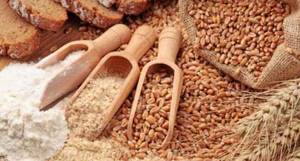
It is important to note that thanks to dietary fiber, this product is essentially an intestinal cleanser, a kind of broom that sweeps away waste and toxins, but in addition, it saturates the body with useful substances, vitamins and microelements.
How does bran work?
The beneficial properties of bran are the main reason why they are eagerly used in the field of nutrition. A large number of dietary programs are based on the daily consumption of this product. What is the mechanism of action?
Breakfast made from bran is not only low-calorie, but also quite nutritious and satisfying. Most vegetarian diets are formulated using this source of micro- and macronutrients.
Digestion improves and the formation of new fat reserves is inhibited. All food consumed is used to produce energy. Even the most strict diet program will be easily tolerated due to long-term satiety and suppression of hunger. The vitamin composition helps combat nutritional deficiencies during any hunger strike.
When you include wheat fiber in your diet, be prepared for a laxative effect. The intestines, kidneys and liver will be maximally cleansed of waste, excess fluid and toxins. The carbohydrates contained in the composition will help recharge your energy, which is undoubtedly important during dietary restrictions.
When can bran cause harm?
This is a fairly rough product, so its use can and should be limited.
Contraindications for use are:
- acute gastritis or exacerbation of chronic ones;
- colitis, enteritis and irritable bowel syndrome;
- peptic ulcer of the stomach and duodenum during an exacerbation;
- Crohn's disease;
- celiac disease - congenital gluten intolerance;
- avitaminosis;
- young children.
It is important for those taking medications to know that it is unacceptable to use the medication and bran in one dose. Due to their enterosorbent properties, they absorb the drug onto themselves, prevent its absorption into the blood and remove it from the body.
It is advised to space the reception over time. At least 2 hours should pass between doses of both.
You should carefully follow the instructions to drink enough water - at least 2.5 liters. Failure to comply with this condition contributes to constipation, flatulence, and abdominal discomfort. Taking an overdose carries a risk of constipation and intestinal obstruction. To avoid negative consequences, let's consider some rules.
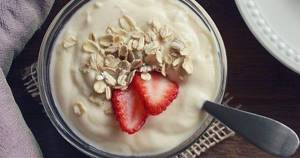
Most experts, including sports nutritionists, consider bran to be the most useful product for weight loss.
Natural, ground and granulated bran

Depending on the method of processing wheat grains, bran is divided into three main groups: natural, ground and granulated. Let's talk in detail about each type.
Natural bran is obtained by preliminary rough grinding. Small scales are produced. According to nutritionists, this is the most optimal, healthy option for healing the body and improving digestion. Before direct consumption, they are soaked in water.
The second type is ground or pressed. The production process does not use high temperatures, chemical additives or steam, so the product retains 100% of its nutrients.
Granular is the third type. During cooking, dyes, flavorings, and aromas are added, so the beneficial properties are reduced, but aesthetically they look much more attractive. They do not need to be soaked, but taken immediately. Despite this, nutritionists question the benefits of the product for the body.
Contraindications and harm
However, such a wide list of useful properties is not a reason not to listen to the disadvantages of the product, especially since they still exist.
First of all, bran should not be consumed if you have gastrointestinal diseases. Especially if they are in the acute stage. Such diseases include: gastritis, gastroduodenitis, stomach ulcer. It is unacceptable to use bran if you have a history of cholecystitis and pancreatitis.
It is not recommended to use them while following a low-calorie diet, as they can even cause hungry fainting. This happens due to the fact that the body already receives few nutrients, and bran also gives an additional feeling of fullness, so a person stops feeling hungry and leads to exhaustion.
It is unacceptable to consume bran if you have gluten intolerance.
Contraindications to the diet
The usefulness of the product does not exclude careful use. Wheat bran can even harm the body if used unreasonably.
Contraindications:
- stomach ulcer;
- gastritis;
- colitis;
- inflammation of the gallbladder and thyroid gland;
- individual intolerance;
- low blood pressure.
Before deciding to consume fiber, you should get face-to-face consultation with specialists. After examining your health, your doctor will be able to either dispel doubts or help you choose the appropriate dosage. Self-use may harm the body.
Types of bran
Bran can be wheat, rye, oat, rice, buckwheat, or millet. It’s unlikely that anyone can answer the question of which bran is best for weight loss, since each type has its own properties. For example, wheat grains help normalize intestinal microflora, rye grains reduce blood sugar levels, and so on. But in any case, regardless of the type, bran contains a large amount of dietary fiber and valuable substances that promote weight loss, cleansing the body, normalizing appetite and improving well-being. Therefore, in the absence of contraindications, any type demonstrates effectiveness.
How to choose bran: general rules
To achieve weight loss, it is important to know how to choose the right bran. General rules will help with this:
- Place of purchase - it is better to buy in pharmacies or supermarkets. You should pay attention to the expiration date: a good product cannot be stored for longer than four months. If the numbers exceed this value, you should avoid the product, because most likely it contains chemical additives - preservatives.
- Ingredients: absence of flavorings, coloring agents and flavor enhancers, which increase the calorie content of the product and reduce the weight loss effect. The only acceptable color is light brown.
- Method of grain processing - it is necessary to choose crushed rather than granulated bran.
- The peel should be as thin as possible.
- The grind is fine.
- The product should be free of husks, which indicates purity.
Fasting day
A fasting day on kefir and bran is an excellent way to give your body a shake-up and lose 0.5-1.5 kg of excess weight. The daily diet will include 1.5 liters of kefir with a fat content of 0-1% and 30 g of bran.
Options for a fasting day are as follows:
- Steam the bran with boiling water, divide it into four parts and use it with kefir throughout the day.
- Steam the bran and use it between kefir doses. Drink a fermented milk drink every two hours in the amount of one glass.
- Mix the daily portion of bran with kefir and let it brew, divide the resulting mixture into six servings and consume throughout the day with equal breaks.
How to use bran for weight loss?
Proper use of the product is the key to success. If there was no coarse fiber in the diet before, then at first its dose should not exceed one teaspoon per day. This dosage must be maintained for a week. If there are no side effects, the daily dose is increased to a tablespoon. Then they gradually switch to the main dose - 30 g per day.
It is believed that it is advisable to consume fiber during breakfast. Taking it in the morning ensures you feel full throughout the day, which is especially important when losing weight. Bran sticks are used as a snack between main meals. The duration of the bran diet depends on what specific result the person is striving for.
Bran with kefir

Kefir with bran is used for different purposes: for a fasting day, a mono-diet, or as an integral part of the daily menu. For beginners, it’s definitely better to start with the third option. It is advisable to add them to the diet gradually.
Try mixing one glass of fermented milk drink with a teaspoon of bran. Let sit for 20-30 minutes to swell. It is better to drink the cocktail in the morning, preferably on a day off. Because it is unknown what the body’s reaction to the new supplement will be.
Kefir is an excellent solution for those who do not want to consume bran in its pure form. They can be mixed with first or second courses, but if there is no free time for cooking, they can be successfully combined with a fermented milk drink. It is not necessary to use low-fat or low-fat kefir.
Wheat, oat, flax and rye bran are suitable for making cocktails. Rye beans are first poured with boiling water before use.
Oat bran
Oat bran is the outer layer of the grain, containing more than 90% of all nutrients. The high fiber content provides the nutritional value of the product. This is a combination of beneficial properties and detox effect.
Compound:
- 17.4 g protein;
- 7.04 g fat;
- 51.93 g carbohydrates;
- 15 g fiber.
When combined with water, the rough, insoluble fibrous structure swells and increases in size. This fills space in the stomach, reducing appetite and maintaining a feeling of fullness. Calorie content is 246 kcal.
Wheat bran
The basis of wheat bran is fiber, which swells in the stomach and helps remove toxins from the body. Calorie content - 165 kcal.
Rye bran
The number of calories is 221. The beneficial properties are manifested when using the product in its pure form or in combination with one dish.
Rye bran exhibits excellent cleansing and disinfecting properties. Also used in the complex treatment of constipation, diabetes, and diseases of the cardiovascular system.
The product has a rather coarse structure, so if consumed excessively, it can damage the mucous membrane of the digestive tract. It is recommended to consume the daily dose several times and in combination with plenty of liquid.
Flax bran
Flaxseeds are less popular, but no less useful. Calorie content is 260 kcal. The daily norm is 20-30 g.
They exhibit a strong laxative effect, so they are often consumed with kefir. To avoid dehydration, you need to drink enough water.
Mechanism of weight loss

In a week, a diet with bran allows you to lose 3-4 kg, triggering processes in the body that work to reduce weight:
- eliminating digestive problems;
- reduction of blood sugar and cholesterol;
- cleansing the body of toxins;
- acceleration of metabolism;
- swelling in the stomach, fiber creates a feeling of fullness for 4-5 hours.
If you need a short-term diet for weight loss with health benefits and a balanced diet, choose bran - if you use it correctly, you will achieve all these goals 100%.
On a note. Dukan, in his famous diet, suggested eating 2 teaspoons of bran flour daily to improve weight loss results.
Weekly diet for weight loss with bran
A weekly diet triggers metabolism, resulting in weight loss. Give preference to wheat, rye or oat bran. It is necessary in advance to accustom the body to fiber by gradually adding a teaspoon of the product to the diet.
Basic recommendations:
- reduce daily caloric intake to 1500 kcal;
- reduce the amount of portion you eat;
- exclude fatty, fried, sweet, pickled, alcohol and fast food;
- eat lean meats and fish, dairy products, seafood, vegetables and fruits;
- devote time to physical training;
- develop a wakefulness and sleep schedule.
How much wheat bran can you eat per day?
When consuming wheat bran, it is very important to know when to stop. You can eat no more than 3-4 tablespoons of the product per day.
The introduction of bran into the diet should be gradual, especially when it comes to coarse grinding. Start with one spoon, gradually increasing the dose to 4.
In large quantities, this product can cause flatulence, cause indigestion and other intestinal problems.
During the period of taking bran, it is imperative to drink clean water in a volume of 1.5-2 liters per day.
It is best to take bran in the morning. Throughout the day they will improve gastric motility and cleanse it. But it is permissible to use them at any time of the day.
Expert opinion
After reading reviews of people who have lost weight, looking at photos of their slender figures, we all involuntarily want to believe in the miraculous properties of wheat, buckwheat or some other bran. Advertising for the method says that bran contains an incredible amount of nutrients. In addition, they fill the intestinal tract with the necessary ballast components that support the environment of microorganisms and enhance peristalsis. But these are just advertising blocks...
The human body does not produce a single enzyme that can cope with the digestion of bran products. This means that the beneficial substances left as they came with them.
The point is not only their uselessness, but also their potential harm. The rough texture is harmful to the intestinal walls, especially with long-term use. Of course, if you eat a piece of bran bread in the morning, there will be no harm. And benefits too.
It is undeniable that fiber is important and necessary for the human body for the proper functioning of the gastrointestinal tract. But it should be a natural source of fiber - vegetables and fruits, and not industrial agricultural waste.
Wheat bran for constipation
The recipe for using wheat bran for constipation can be as follows
: 2 tbsp. bran is poured into a glass of hot milk, wrapped and left for 30-40 minutes. You need to eat the mixture on an empty stomach, preferably in the morning, 15-20 minutes before breakfast - do this for a month. You can cook 1 tbsp. bran and eat them 2 times a day.
The so-called bran water also normalizes intestinal motility: add 4 tbsp. bran 20 tbsp. hot water, leave for 3-4 hours, strain, add honey or juice of any berries (1 tbsp), and drink on an empty stomach. There is another method of preparation, when a glass of bran is poured with a liter of cool water and left for 8 hours.




